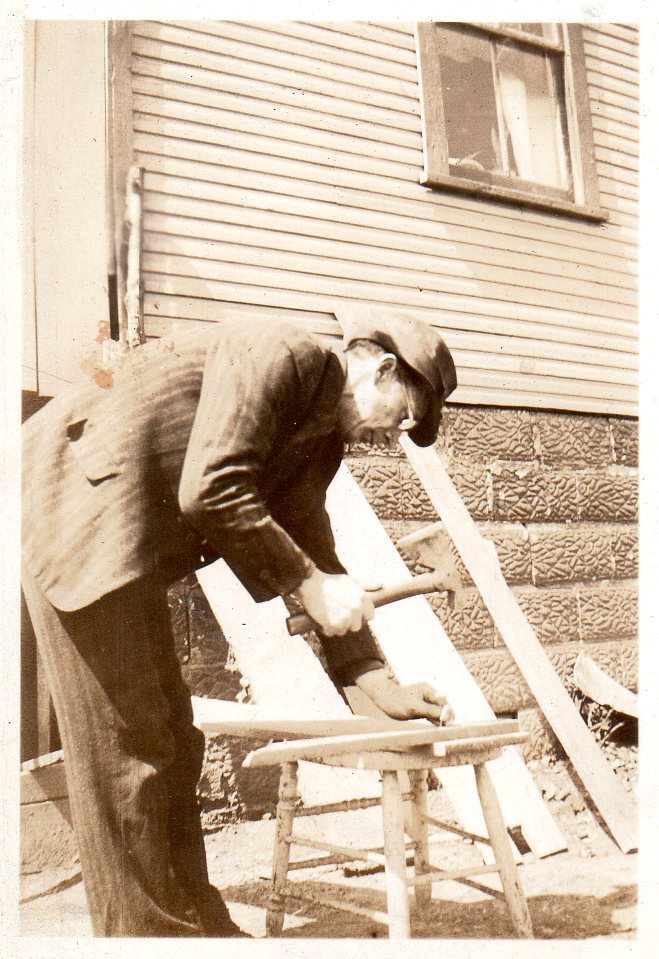
Members of a family tend to share ways of thinking or doing. The traits may be expressed differently or skip a few people, but it’s there. These things are probably a mix of nature and nurture, innate aptitudes and family attitudes. My sister recently commented about “The Nestoff Way”, and I’ve been thinking about what that is.
“The Nestoff Way” refers to what my six siblings and I picked up from our parents, and shared with the 15 grand-kids. My dad learned some of what he knew from my mom’s father, Henry Zacherl, shown in the photo.
My parents grew up during the Great Depression, then Dad went on to be a flight engineer on a B-24 Liberator in the European Theater during World War II. Those experiences may have formed “The Nestoff Way”, but there is more to it.
The Nestoff Way
- Working can be gratifying if the project is worthwhile.
- Solving a problem is a way to express creativity..
- We are internally motivated, and aren’t interested in impressing anyone.
- It’s more satisfying to pay the iron price, than the gold.
My sister’s comment coincided with a project I just finished. That project is a good way to explain what I mean.
We aren’t averse to working and we aren’t interested in buying something extravagant to impress anyone, so we tend to be financially solvent. A concept adapted from the TV show, The Game of Thrones, paying the iron price means creating something yourself, while paying the gold price, is just paying for it.
Being able to smoke your own brisket is more impressive then going to Mission Barbecue to buy smoked brisket. We can all pay for lunch, but not everyone has the knowledge and ability to create.
One aspect of our problem-solving is the challenge of using the resources available, rather than buying more resources. Taken to it’s absurd conclusion, there is no such thing as junk, just items we haven’t found a use for yet.
Our favorite example: Dad’s tighty-whities got holes in them, before the elastic waistband lost it’s elasticity. That has to be good for something. Unrelated problem: The plastic grocery bag used as a bathroom trashcan liner, would fall into the can. He would cut out the elastic waistband of his discarded underwear, and use it like a bungee cord around the top of the can, keeping the bag secure.
Dad had plenty of bungee cords. That wasn’t the point.
Here’s my project.
This is Sparky sitting in an IBC tote. Industrial products are delivered in these, and can usually be found on Facebook Marketplace for about $20. That’s a good price for a study cage. I’m using them to store firewood.
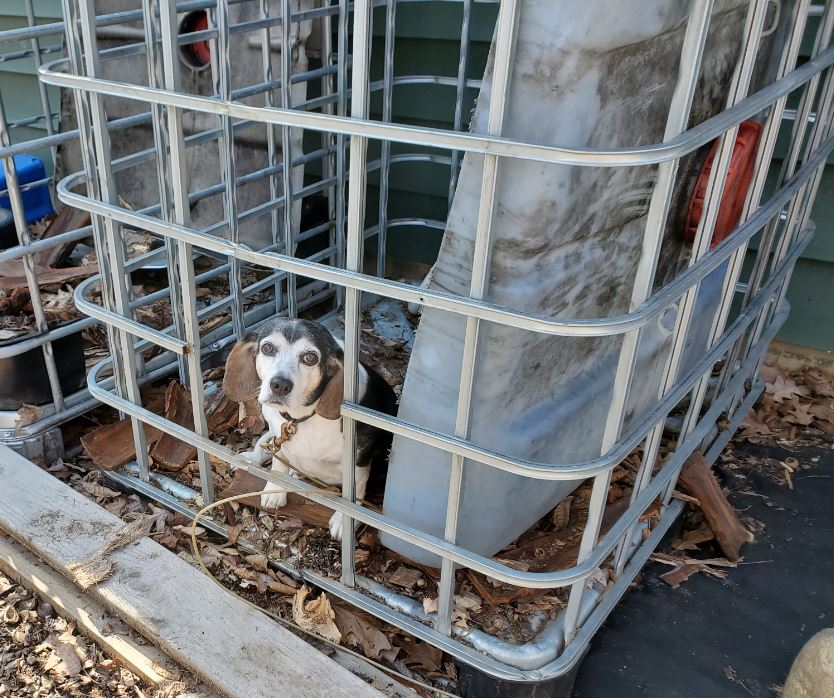
The IBC tote often comes with a plastic 275 gallon tank inside. The tank may have contained dye for mulch, cutting oil or any other liquid. My tanks had held aircraft antifreeze, so were easily rinsed out.
The tanks are 1/8″ thick HDPE plastic. A 12″ x 12″ sheet costs about $10. My firewood buddy Joe, has thirty IBC totes, and has been discarding the tanks.
Discarding the tanks was a problem that I intended to solve with a creative solution. Here is a tank that I had already started working with.
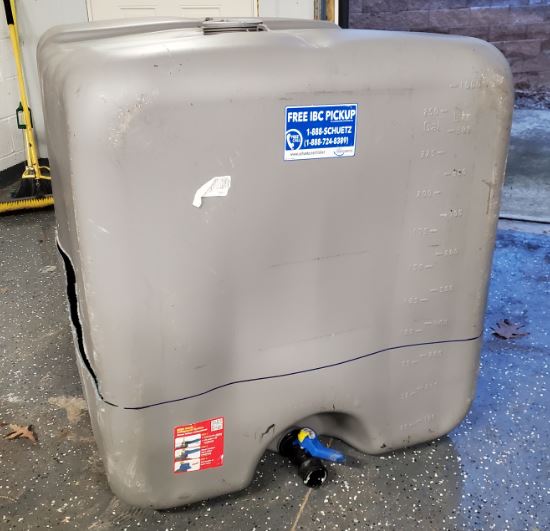
I’m sure there is somewhere I could drop off the tank for recycling, but that seemed like a bullshit solution that would squander much of the value.
Joe has a 17 acre wooded lot where we deer hunt in the winter. For concealment, a ground blind is necessary. The hunter may be in the ground blind for 4 hours in the middle of winter. Protection from the weather is very helpful.
Joe’s cousin built a ground blind from wood. It was about two levels worse than this clubhouse from the Brady Bunch. It has no floor, so the chair sinks into the mud and the internal humidity guarantees that it’s a spider habitat.
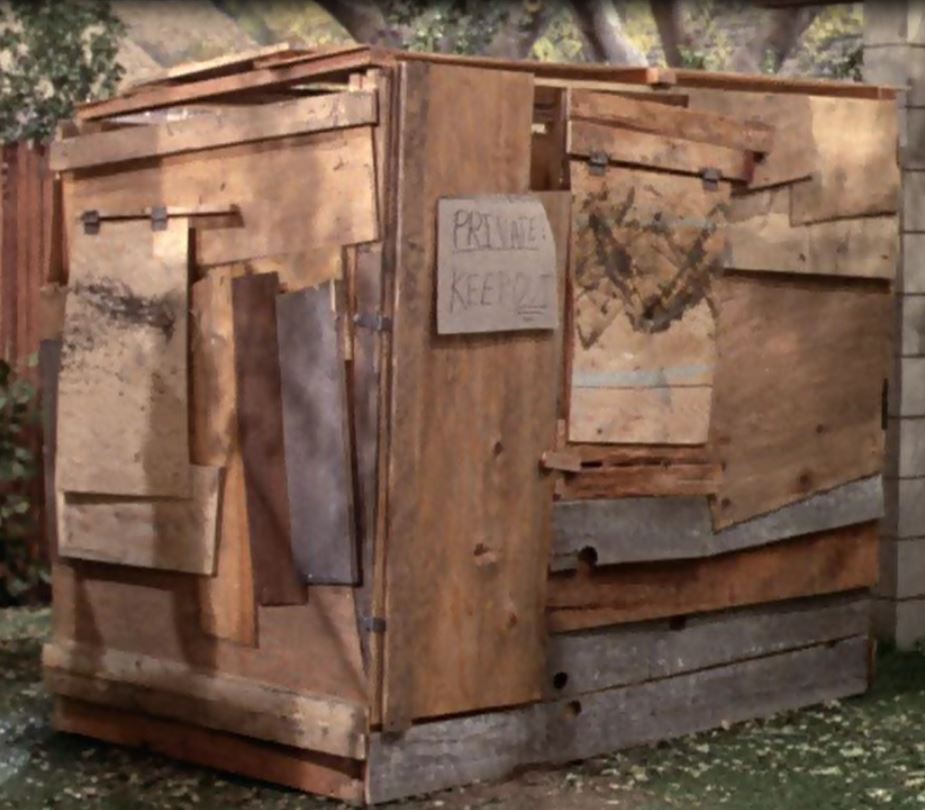
It makes me sad.
An alternative that we’ve used in the past, is to purchase a ground blind something like this:
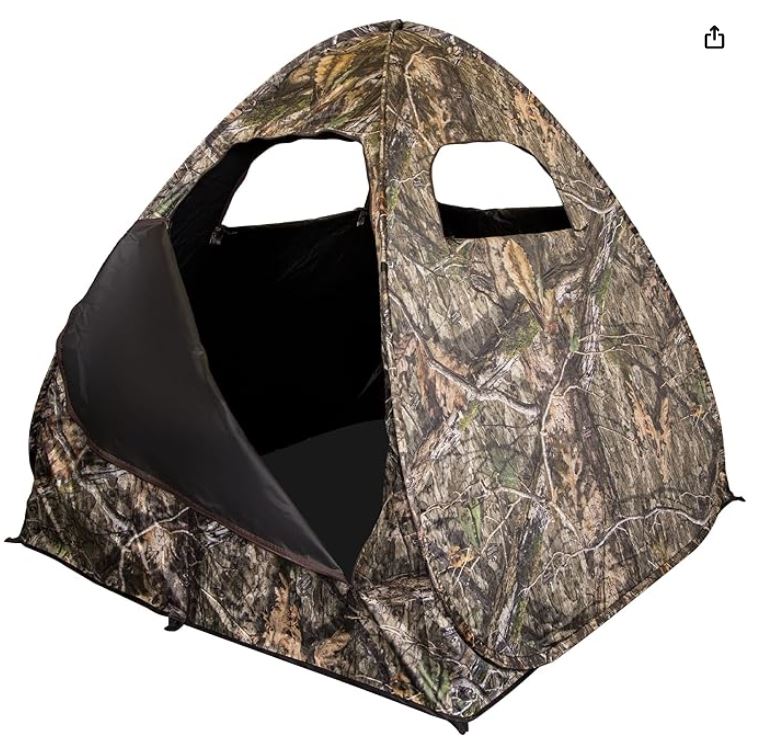
That costs $80, is portable, nylon and has no floor. It doesn’t offer much protection from the elements.
There are many other ground blinds available. I can afford to buy a hard-sided, weather-proof blind with a floor, but I wanted to combine two IBC tanks to build a blind. To make the project more challenging, I didn’t want to purchase anything beyond a few wood furring strips. I’d use whatever I had on hand.
The tank cuts easily with a battery-powered circular saw, but everything is really floppy. Here is the bottom tank, with the top and doorway cut out.

Here’s how it come out. The colored circles are added for reference.
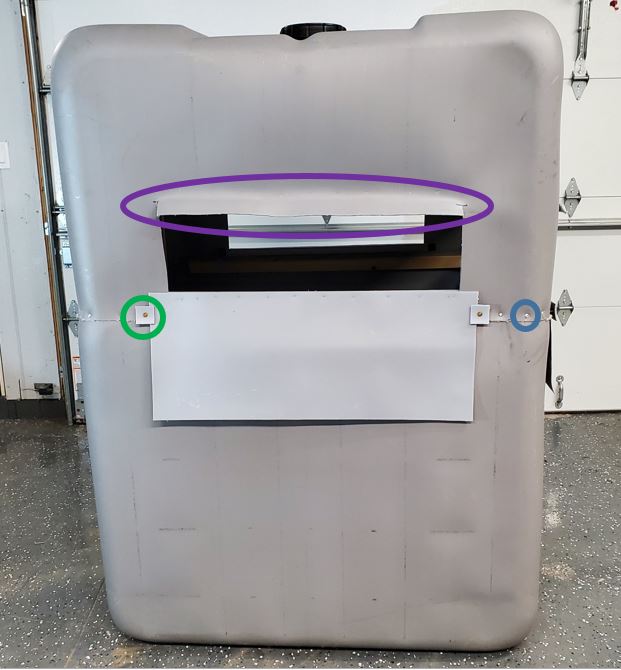
It needed to be as weather-tight as practical. A window is needed on each wall, that can be opened and closed from inside without making much noise.
The blue circle is where the top tank was joined to the bottom tank with rivets at the corners. The purple shows an eave to discourage water from entering a closed window. When I cut the window hole, I cut a little higher so I could bend the flap to form the eave. The green circle indicates a plastic tab that keeps the window panel from billowing out when the window is closed.

The window panels extend two inches beyond the window hole to keep some water and wind out. The window panels were cut from the plastic cut out for the door.
Since the door panel is so large, I used any panels what were long enough, and overlapped them. I riveted the overlapped panels to keep the air gap smaller. Some weatherstripping was put in to reduce the gap next to the door on the hinge side. I did not put a door hasp or latch on the outside so I never get locked in.
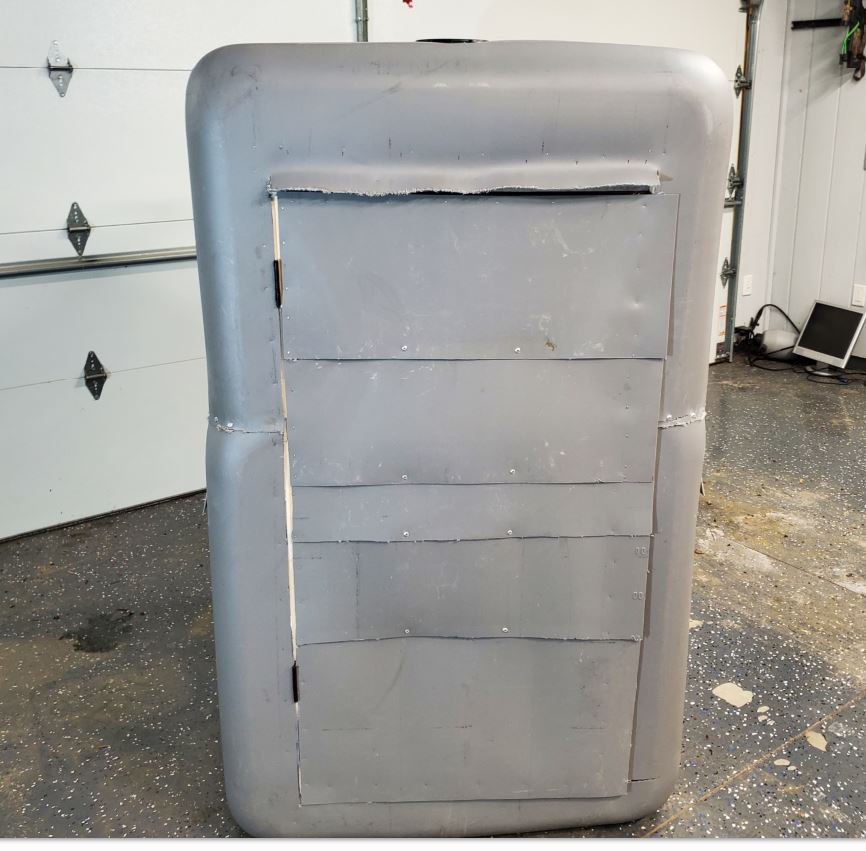
With the door open.
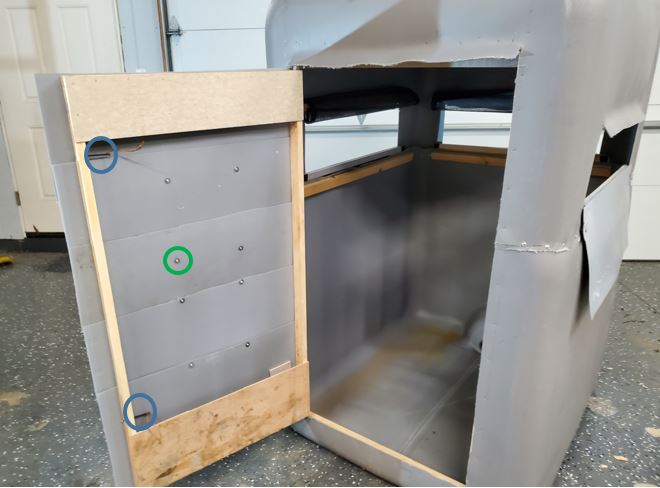
I didn’t have any door latch hardware on hand, so used two nails, in the blue circles, to pin the door shut. There isn’t much to the door, so those scrap wood panels keep the door square.
The windows are the whole point of the deer blind, so options are needed. Deer see motion, so it’s important to keep it as dark as possible in the blind.
Screens keep bugs out, but also keep it darker and more difficult for deer to notice the hunter, but also need to be rolled up. I had window screen on hand along with Velcro.
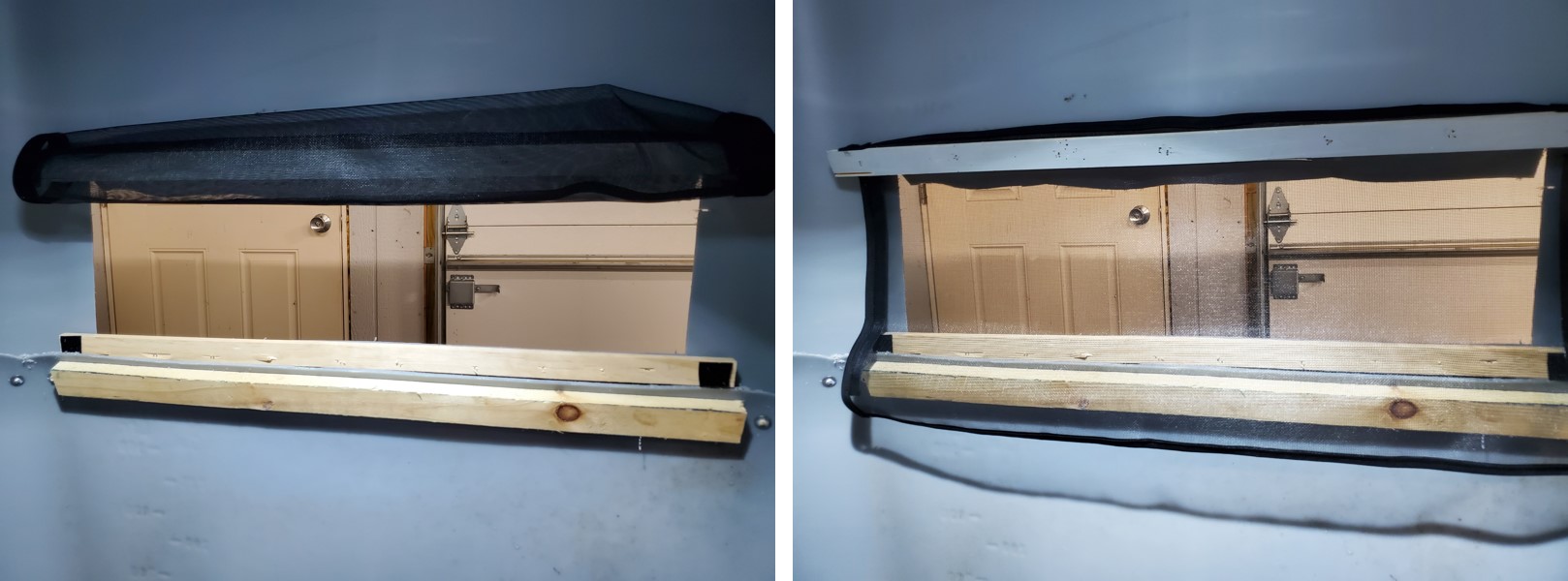
Windows can be opened or closed while inside or can be half-open. The gun or crossbow may rest on the bottom of the window, so it must be sturdy.
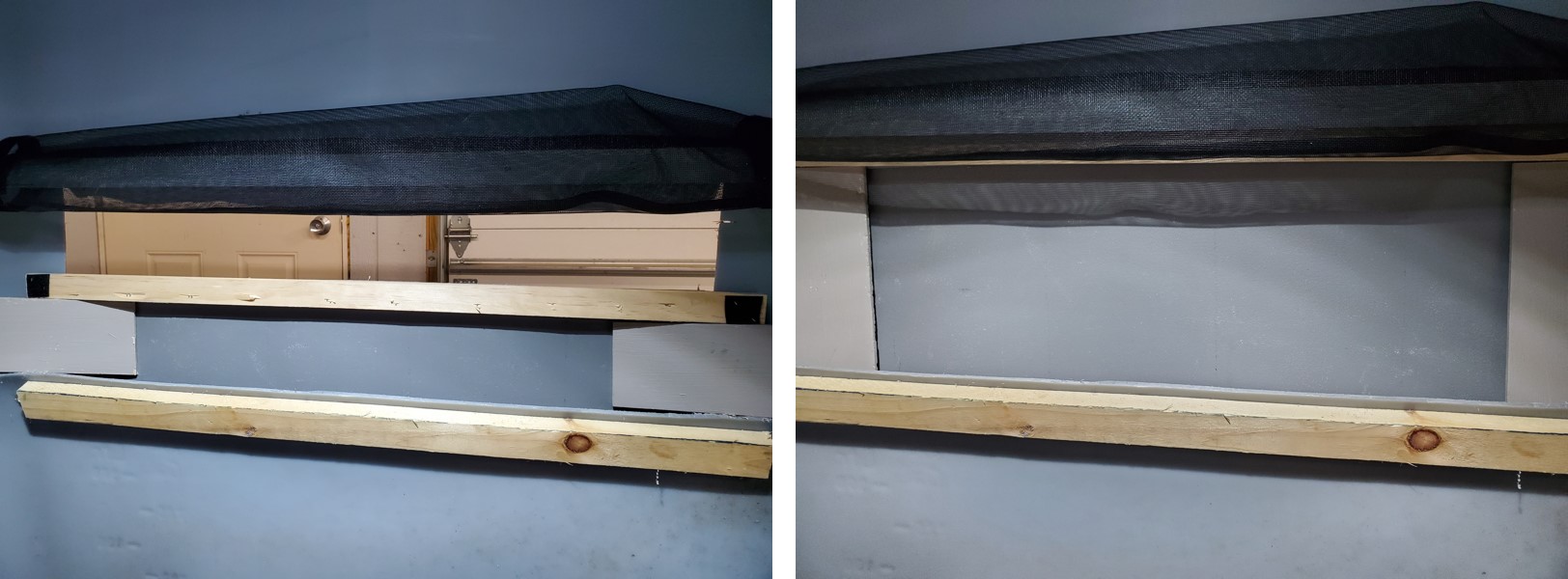
The blind stands 64 inches high, so it’s not for standing. The limited volume may keep the interior a little warmer. I’m eager to try it.
Getting back to “The Nestoff Way”.
This project was motivated by the desire to find a useful purpose for the IBC tanks as an alternative to tossing them in a dumpster. Buying materials to find a practical use for the tanks, would defeat the purpose. Youtube has a whole range of project for IBC totes.
This project cost me $9 for furring strips. The time and effort was the iron price. The gold price would be to buy this.
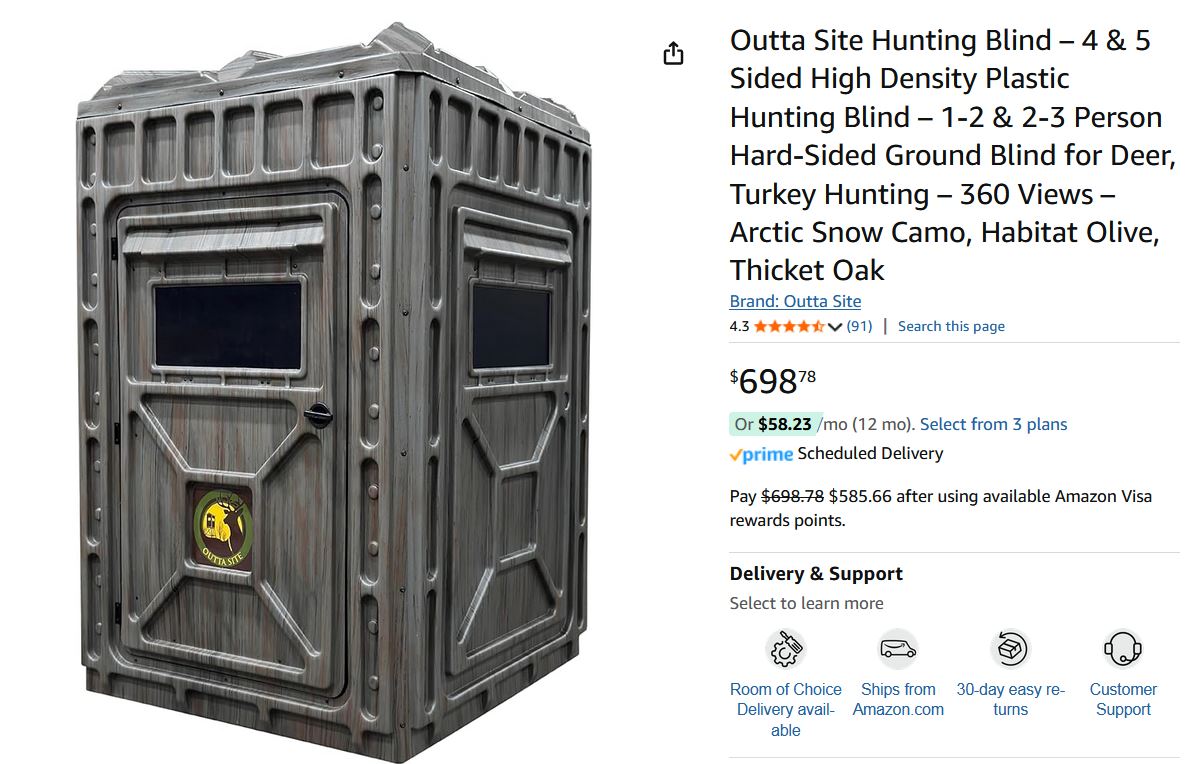
Based on the Amazon listing, it might work a little better than the scrap blind, but not significantly better. I get that some people will only ever take the easy way, and don’t see the value in ever doing anything different. That’s not the Nestoff way.
Leave a Reply